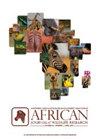The Application and Limitations of a Low-Cost UAV Platform and Open-Source Software Combination for Ecological Mapping and Monitoring
IF 1
4区 环境科学与生态学
Q2 Agricultural and Biological Sciences
引用次数: 5
Abstract
Low-cost uncrewed aerial vehicles (UAVs) have become ubiquitous, and advanced UAV systems are affordable for many field ecologists and wildlife managers. Many hobbyist UAVs have been applied to ecological studies, but proprietary software limits their widespread application with little quantification with regards to their accuracy and efficiency in the creation of maps through photogrammetry. Our study addressed these concerns by evaluating a combination of an entry-level UAV and open-source photogrammetry drone mapping software as a low-budget mapping solution for ecologists. Geometrically accurate orthophotograph maps were created from flights at altitudes below 70 m with and without differential global positioning system (d-GPS) ground control points. Object measurement errors were constrained below 30 mm for altitudes up to 70 m, and errors fell below 10 mm at 30 m altitudes with d-GPS points and below 20 mm without the use of d-GPS ground control points. Our analyses provide guidelines that parameterize the requirements for the mapping of smaller areas. Ecological surveys that do not require <50 mm accuracy can benefit from the methods described here, and many ecological studies that are presently using costly software and UAV platforms could save when adopting this approach.低成本无人机平台和开源软件组合在生态测绘和监测中的应用和局限性
低成本的无人驾驶飞行器(UAV)已经变得无处不在,先进的无人机系统对于许多野外生态学家和野生动物管理者来说是负担得起的。许多业余爱好者的无人机已经应用于生态研究,但专有软件限制了他们的广泛应用,很少量化关于他们的准确性和效率,在创建地图通过摄影测量。我们的研究通过评估入门级无人机和开源摄影测量无人机测绘软件的组合,作为生态学家的低预算测绘解决方案,解决了这些问题。几何精度的正射影像图是在海拔70米以下的飞行中绘制的,有或没有差分全球定位系统(d-GPS)地面控制点。在海拔高达70 m时,目标测量误差被限制在30 mm以下;在海拔30 m时,使用d-GPS测点误差降至10 mm以下;在不使用d-GPS地面控制点时,误差降至20 mm以下。我们的分析提供了参数化小区域制图需求的指导方针。不需要<50毫米精度的生态调查可以从这里描述的方法中受益,并且许多目前使用昂贵的软件和无人机平台的生态研究可以在采用这种方法时节省成本。
本文章由计算机程序翻译,如有差异,请以英文原文为准。
求助全文
约1分钟内获得全文
求助全文
来源期刊

African Journal of Wildlife Research
Multiple-
自引率
0.00%
发文量
14
期刊介绍:
The African Journal of Wildlife Research is an ISI ranked, leading peer reviewed scientific publication in wildlife research in Africa, Arabia and Madagascar, with a broad base covering scientific, applied, managerial, methodological and sociological issues related to wildlife research. The journal publishes original full-length scientific papers, short communications, book reviews as well as reviews on science-based research invited by the editor-in-chief. This research journal and has been published annually since 1971.
Until 2014 (Volume 44) the journal was known as the South African Journal of Wildlife Research and from 2015 (volume 45) the name changed to African Journal of Wildlife Research. The journal reaches a wide readership, including both local and foreign wildlife managers, academics and wildlife owners, and libraries local and abroad. It is an important reference for anyone interested in the management and sustainable utilisation of natural resources.
 求助内容:
求助内容: 应助结果提醒方式:
应助结果提醒方式:


